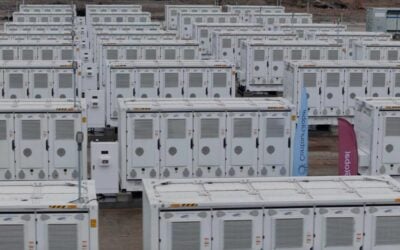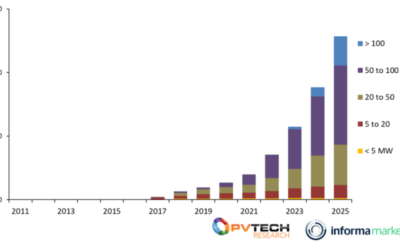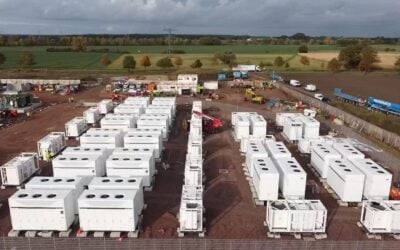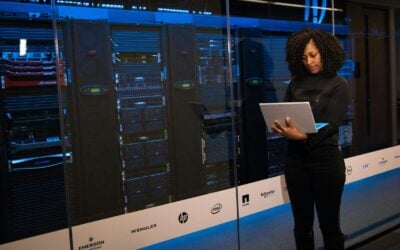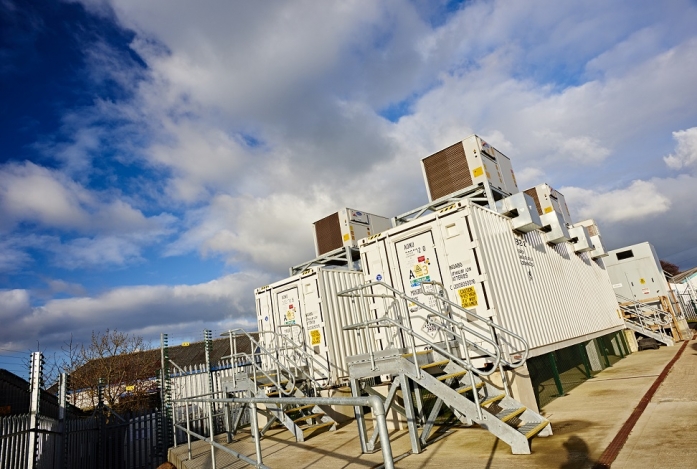
Northern Powergrid (NPg), one of 14 distribution network operators (DNOs) licensed to operate the UK’s electricity system below transmission level, has called on the energy sector to collaborate to decide the future of network-scale energy storage after differences in the role of network owned and operated batteries emerged between differing DNOs.
NPg, which serves 8 million people across three regions in the north of England: the North East, Yorkshire and northern Lincolnshire, has been bullish in the past about its ambitions to manage its own battery assets as it moves towards a more active distribution system operator (DSO) model.
This is in spite of national regulator Ofgem’s repeated position to preclude such activity for fear of market distortions that could stop private commercial businesses from providing the flexibility services required by both the national and regional networks.
However, NPg representatives have appeared a recent public events to call on DNOs, regulators and industry partners to work together to define the future of network-scale energy storage.
Try Premium for just $1
- Full premium access for the first month at only $1
- Converts to an annual rate after 30 days unless cancelled
- Cancel anytime during the trial period
Premium Benefits
- Expert industry analysis and interviews
- Digital access to PV Tech Power journal
- Exclusive event discounts
Or get the full Premium subscription right away
Or continue reading this article for free
Patrick Erwin, policy and markets director at NPg, said: “The storage industry is growing rapidly and, in parallel, we are making the biggest changes to our power network since the 1970s. Evaluating how battery storage interacts with our network from household to utility level is a key priority for us as we seek to develop a truly customer-led distribution system.
“We welcome healthy engagement between DNOs, regulators and industry partners to present the best possible uses of energy storage on our network. Debate…will be crucial to the advancement of this collaboration and the success of energy storage.”
A particular area of focus for NPg is the use of battery storage for increased resilience in areas vulnerable to power cuts. Dubbed ‘smart resilience’ by head of regulation and strategy Jim Cardwell when he spoke to our UK sister site Clean Energy News in December 2017, the DNO has repeated its claims that prescriptive rules on storage ownership for DNOs would stifle innovation in this area to the detriment of customers.
“We are very aware that getting the role of battery storage right now, in these early stages, is a sizeable opportunity for us to deliver significant service improvements for our customers. As such, we are considering how we might use this energy storage opportunity now to provide increased support to our most remote and technologically-vulnerable communities in the long-term,” he said.
“In order to maximise the benefits for customers we need to make sure that storage assets are available for the network to call on.”
DNOs already have a range of sizeable battery storage projects left over from previous research and innovation programmes, such as NPg’s 2.5MW/5MWh battery in Darlington. This is now being used to provide grid frequency services, a business proposition which Ofgem says can and should be provided by the market rather than network companies.
Storage ‘too expensive’ for DNOs
Varying DNOs have differing stances on this view, with Western Power Distribution’s future networks manager Roger Hey recently telling an audience at the Energy Storage Summit – organised by our publisher Solar Media – that storage did not provide an attractive investment for DNOs.
“We’ve done a lot of testing through our low carbon network fund and other innovation projects when we tested out grid-scale, DNO owned storage at large scale, 11kV-scale and indeed at small scale. What we concluded was that even with price projections set to fall, it’s still probably too expensive in most places in the UK as a DNO asset,” he said.
“Physically the UK is quite a small country so you just haven’t got the length of lines and therefore the cost associated with some of the conventional reinforcement that you have in Australia, the States, Europe and elsewhere.”
He added that WPD use a scenario investment model to identify the best solutions for freeing up capacity on the network. After identifying where this can be found, it pick the most appropriate, smart or conventional solution to achieve the required outcome; storage has yet to be selected.
“DNO ownership of storage is probably not going to be a barrier to the rapid growth in capacity on the system. We should be able to buy services from storage as demand side response,” Hey added.

